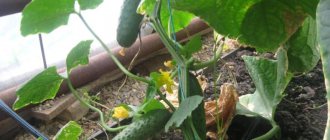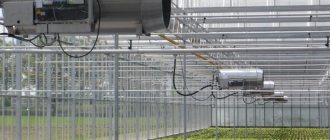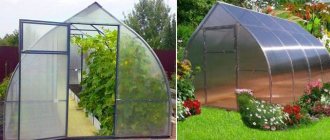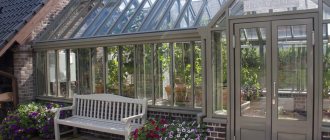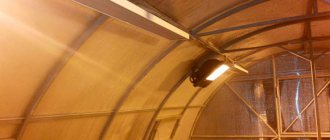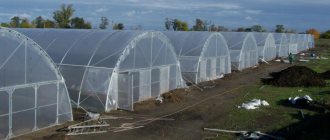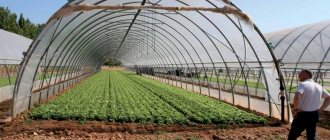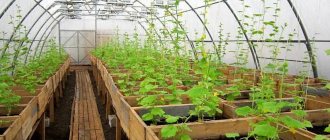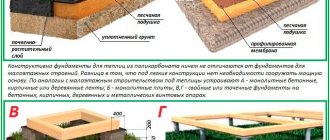Why do you need shade mesh for greenhouses?
This is a useful agrotechnical measure, especially relevant during a period of climate change, winters are becoming shorter, there is less snow, and summers are becoming drier every year, the sun is scorching. All these factors have a negative impact on fertile soil, and as a result, on the future harvest.
To preserve the ripening of crops and fruits, an innovative breakthrough is used to solve the problem - shading nets have been invented and are increasingly gaining popularity, helping to preserve plants and optimally grow berries, fruits and vegetables.
The best manufacturers
It will be much easier to find a high-quality shading net if you familiarize yourself with the list of bona fide manufacturers in advance. Let's look at some of them.
Purpose of grids
Manufacturers from Russia and foreign countries offer customers a huge range of nets designed to preserve crops.
- Products are made from synthetics in the form of a thread to which foil is added. The material is resistant to ultraviolet radiation and external negative factors.
- The color scheme is different, mostly the coatings are green, but they can also be gray, red, white and others.
They differ in the degree of protection from natural sunlight. The main difference is the size of the cells. If the cell is large, then the protection indicator is lower. Fine-mesh products more effectively protect plants from the sun. The degree of protection is in the range of 45-90%.
The protection works on the principle of partial reflection of sunlight and dispersion of direct rays to reduce thermal effects. This effect promotes optimal growth and uniform ripening of fruits.
How to shade seedlings
High temperatures are just as dangerous for seedlings as low temperatures. When thermometer values are above 35-40 °C, the plants are depressed, the functioning of the root system deteriorates, the ovaries crumble, and fruits are not formed.
In open ground, this is usually dealt with by the weather itself. Good ventilation and abundant watering maintain the desired temperature for plants. To prevent seedlings recently planted in the ground from burning in the sun, they can also be shaded with spunbond. The temperature under the agrofiber is regulated to comfortable values, and the sun's rays do not penetrate through the non-woven material.
It is not possible to provide sufficient ventilation in a greenhouse, and other ways are needed to shade and protect plants from heat and high temperatures.
Main types of nets for greenhouses
Nets designed for shading vary in purpose of use, color and degree of protection. For example, there are products for greenhouse structures or canopies, for growing green biomass, tomatoes, cucumbers and other crops, for shading fences, arranging gazebos and canopies.
The coatings scatter the flow of sunlight and evenly illuminate the entire area of the greenhouse, due to which the fruits ripen simultaneously on all plantings planted in the greenhouses, increasing crop yields.
Spraying and watering seedlings
In the early stages, when there is still snow on the street, and the seedlings are already in the greenhouse, it is necessary to carry out constant preventive spraying. It will be effective to use special modern stimulants and growth regulators, adaptogens - drugs that help plants withstand stress, increase their immunity and protective properties.
It is also important that the seedlings do not leave with dry soil in frost. Therefore, before the onset of frost, you need to check that the surface of the soil in pots or beds is moist. If the soil is dry, add additional watering with warm water.
Be careful - it is dangerous to overwater plants in cold weather.
Classification of meshes for greenhouses
The purposes for using coatings are different. Shading nets are used, for example, to build fences to protect the area from prying eyes looking at the local area and planting vegetables and berries.
- The cell density varies, but preference is given to fine-mesh protective screens that harmonize well with metal and wooden fences.
- The purposes for using the products are varied - they cover gazebos and canopies, zoning the local area, decorates the facades of buildings or forests used during construction or repairs, they can be used to equip a house window to protect against mosquitoes, bees and other insects.
The coating also effectively protects the future harvest from birds, which is important, for example, for strawberries.
In greenhouses, nets are installed not only depending on the plantings being grown, but also on the installation method. Inside the greenhouse, an indicator of 45% is sufficient, and if the protection is installed outside the structure, then preference is given to an indicator in the range of 70-80% shading.
Content
Therefore, today, shading mesh for greenhouses is especially in demand, which will help protect plants from the scorching rays of the sun and increase the profitability and prosperity of the farm. It is easily attached using special fasteners and stretched over greenhouse crops. If the greenhouse is opened, the mesh will protect the plants from direct sunlight. If increased light intensity is required to speed up plant maturation, it can be removed quickly and easily.
Features and principle of operation of greenhouse shading mesh
Our country is experiencing a period of climate change, as a result of which the winter period has become light and short-lived, and the summer season has become dry and hot. These natural phenomena negatively affect the yield. An innovative solution to the problem is a unique shading net, which is used on farms and in other areas of activity.
Russian and foreign manufacturers presented a wide range of shading nets. They are made of durable and wear-resistant synthetic material with the addition of foil, which is resistant to ultraviolet rays harmful to plants and to external influences. Green shading mesh, a photo of which can be found on the manufacturer’s website, is in particular demand among consumers. Also on sale you can find products in red, blue, white and other colors.
The operating principle of the unique shading mesh is to partially reflect and dissipate direct sunlight, which reduces the thermal impact. With proper selection of the degree of shading, the temperature in the greenhouse can be lowered by 5-15 C. This property of the innovative material creates optimal conditions conducive to the favorable development and growth of greenhouse plants.
Helpful information! If you did not have time to close the greenhouse structure before a thunderstorm, the mesh will effectively protect the plants and ripe fruits from possible damage.
The universal mesh is effectively used to create comfortable shade curtains:
Types of shading nets
Light-protective sheets are distinguished by application, degree of shading and color. Consumers are offered a universal shading mesh, which can be purchased to cover the entire greenhouse or to protect part of the frame located on the sunny side from the sun's rays. The light-protective fabric differs in the degree of shading from sunlight. The larger the cell size, the less protected the plants are.
| mesh shading degree | 45 to 90% |
| purpose of the product | shading of a greenhouse, open areas of a vegetable garden, gazebo, canopy, fence, vehicles, etc. |
| types of material packaging | bags, rolls, per meter |
Important information! The sunscreen effectively disperses the sun's rays, which guarantees uniform illumination of all areas of the greenhouse and the maturation of all plants.
Benefits of safety net
Professional farmers, gardeners and summer residents strive to increase productivity; this requires protecting plants from climatic influences and from direct sunlight. The main purpose of the shading net is to prevent crops from “burning” during the hot season. Compared to greenhouse film and other light-protective materials, it has many advantages:
Areas of application and features of the use of light-protective fabric
Shading mesh is a universal product that can be used for different purposes and areas of activity. Not only greenhouses and plants can be covered with light-protective fabric. It is widely used for shading gazebos, scaffolding, canopies, and facades of buildings for various purposes from the scorching sun. The mesh allows you to reliably hide from insects and the scorching sun in the summer heat.
By installing a light-protective sheet on the fence, owners of dachas and country houses can get rid of prying eyes from passers-by and neighbors. To do this, it is recommended to choose high-density fabrics that can be used in conjunction with a regular chain-link mesh. The product is attached to the fence elements using plastic clamps, and installation takes a little time.
Shading mesh is effectively used in greenhouses to regulate temperature and protect crops from the negative effects of the sun, precipitation and frost. The cellular fabric creates an ideal microclimate inside the greenhouse, promoting favorable growth of seedlings. If the greenhouse has a film coating, the mesh will protect it from wind and hail.
Helpful advice! If the greenhouse is large, then it is more advisable to use automatic shading control to protect plants.
Criteria for choosing a grid for shading greenhouses
The light-protective product can be used to cover farm and country greenhouses with any coating. By reflecting heat flows during temperature changes at night, the canvas will save up to 20% of heat. In order for the greenhouse mesh to perform its protective function as much as possible, it is necessary to correctly select the mesh, taking into account its characteristics and classification directions.
Recommendation! An integrated approach using shade netting, internal ventilation and artificial mist equipment can quickly lower the temperature in a greenhouse.
When choosing a protective mesh, you need to determine the required degree of shading and the size of the mesh cells. Every gardener knows that cultivated plants of different varieties need a certain degree of illumination of the land:
If you plan to use the shading mesh for domestic purposes, it is better to choose a fabric with a protection degree of 80%-90%. It compares favorably with awnings - it does not create a greenhouse effect and allows air to pass through, blocking the scorching rays of the sun. This is an excellent solution for arranging shady fences and roofs of street cafes, for organizing a cozy gazebo and retail spaces located in the open air. A fence with a shadow mesh is perfectly ventilated and, unlike a monolithic fence, does not interfere with the development and growth of plants.
When choosing a shading net for a greenhouse or open areas of a vegetable garden, it is necessary to take into account the climatic conditions of the area, the type of soil and the characteristics of the crops grown. The density of the canvas is selected depending on its purpose.
| Mesh shading degree | Scope of use of shadow cloth |
| 45% | for growing light-loving crops |
| 60% | for shading in hot conditions tomato, eggplant, cabbage, lettuce and herbs |
| 70% | for external covering of country and farm greenhouses |
| 80% | for covering vehicles, shading fences and hedges |
| 90% | almost does not transmit sunlight, used for arranging gazebos |
Manufacturers guarantee the service life of the shading mesh for 3 years. If you remove it after harvesting, it will last 5-6 years.
How to make greenhouse shading: features of mesh installation
Before installing the shading fabric, the farmer or summer resident must decide how the shading will be carried out and what materials need to be prepared for this. To attach the plant protection net, you will need clamps or clips and supports. It is lightweight, so installation of the canvas can be done by 2-3 people. Usually along the edge of the mesh there are holes intended for tension fasteners.
Main types of shading nets for greenhouses
The shading indicator is selected depending on the characteristics of the growing crops, taking into account the climatic zone of the region:
- For light-loving crops, the optimal indicator is 45%;
- In climate zones with extreme heat, as well as for growing tomatoes, cabbage and herbs, a shading level of 60% is recommended;
- External greenhouse cover – 70%;
- For a fence, hedge and car shelter, it is better to purchase a product with an 80% rating;
- The higher figure of 90% is not intended for plants, since there is practically no lighting, but it is well suited for arranging a gazebo.
The nets not only provide protection, but also decorate the local area.
Description in terms of structure
Construction facade protective mesh has cells, the size of which can be completely different. Manufacturers produce products in certain standard sizes. Typically the cells are square in shape with a side of 10 or 15 mm.
The manufacturing technology may be based on a certain weaving principle, which makes it possible to obtain square or rectangular cells. There is a fine-mesh material on sale that has excellent shading. As the cell size increases, the throughput of the product increases.
Functions of shade nets for greenhouses
Protective coatings that regulate the ripening process of crops and increase productivity are new technologies in agricultural technology that change the spectrum of plant lighting.
And color in this case has not just an aesthetic, but a practical purpose, because thanks to it you can speed up the process of complete ripening of fruits and vegetables by 10-15 days, or slow it down if necessary.
In practice, scientists have found that exposure to waves of different colors makes it possible to regulate the basic functions of plant viability throughout the entire cycle.
Previously, in crop production, only control over lighting was exercised, depending on the names and characteristics of the crops. Now the wavelength of the incoming light is also controlled and what effect it has on the growth of plantings, ripening time and fruit size.
- To speed up the flowering process of plants and the ripening of fruits, warm colors are used, especially red colors. And to delay the process, dark colors are selected: black, blue, etc.
- At the same time, different coating colors are used for certain types of plants. For example, for apples and peaches, red shades will be the most acceptable, affecting the size of the fruit and its sweetness. And for a salad, an excellent option would be a gray or blue color scheme, which significantly increases the green mass.
- The yield in a greenhouse structure will improve if optimal light levels and temperature control are provided inside the greenhouse.
- To achieve these goals, thermal screens are used to increase the temperature at night and prevent it from increasing during the daytime and hot weather. Such products increase the amount of scattered light and improve plant photosynthesis.
Pragmatic and experienced gardeners cover their plantings with shading nets, protecting the plantings not only from the sun, but also from winds, frosts, hail and other unfavorable external conditions.
Also, a positive aspect of using a mesh is the reduction in the consumption of moisture intended for irrigation and savings in terms of purchasing fertilizers.
What temperature do seedlings need?
When planting seedlings in the ground when the threat of return frosts remains, it should be taken into account that even a short-term sharp cold snap can become critical for young plants.
The ability of seedlings to withstand temperature changes depends on the culture, age, variety and health. Young and tender plants are more thermophilic. Cold-resistant varieties, healthy and strong seedlings, and adult seedlings can withstand lower temperatures and short-term cold spells.
For example, young tomato seedlings can withstand cold temperatures of at least 10 °C, adult plants are resistant to short-term drops to 8 °C and below. At a temperature of 4-5 °C, signs of phosphorus deficiency can be observed on the leaves of seedlings (a characteristic purple tint appears) - this element is not absorbed by the roots at low temperatures.
The seedlings can withstand a cold snap of 3 °C, although they will look depressing, they will all wither and lie down, as if they do not have enough water. It's all about the roots, which at subzero temperatures do not work and do not pump moisture and nutrition upward. Such seedlings need to be warmed, transferred to a warm place, so that the roots begin to work again, and the plant itself recovers.
Effect of shade grid color
Each mesh color has its own functional purpose:
- Red. This warm color accelerates the process of growth of the upper part of the plantings, plants bloom faster, and fruits ripen earlier. Productivity not only increases, the fruits themselves increase in size. During the experiments, it was under the cover of red shades that the plantings grew taller with a good harvest.
- Blue. This shade retards growth, providing optimal control of crop ripening if market needs and customer demand require it. In addition, this color scheme increases the green biomass of dill, celery, lettuce, etc.
- Grey colour. Popular colors for coatings. It not only diffuses sunlight well and effectively protects against cold weather, but also expands the surface area of the leaves, and also helps the main trunk of the planting to branch out further.
- Pearlescent shade. An aesthetically pleasing color that has a positive effect on how the crop develops and grows, and also helps the development of additional branches and influences the increase in fruit size.
Experienced gardeners, with the help of scientists, have noticed that if the same vegetables are planted at the same time in greenhouses covered with nets of different colors, then it is possible to regulate the growth rate, the timing of full ripening and the yield of vegetables, berries, fruits and herbs.
Additional area of use – advertising
The covering mesh can perform an informational or advertising function. To do this, a composite material with an image is attached to it. Using an inkjet printer, inscriptions and drawings are durable and bright. The logo can be printed on the mesh, which will attract new customers. With its help, you can declare yourself as a modern, reputable developer.
Selecting Shading Grids
The range of light protection nets is quite extensive, therefore, in order not to make a mistake in your choice, be guided by the functions of the coatings and the main directions of their classification.
Nets are used in large greenhouse structures, as well as in small greenhouses. Moreover, the material used to make the greenhouse itself can be absolutely anything.
- The value of the shading mesh is also its ability to retain 15-20% of heat in case of temperature changes, especially at night. This valuable function is provided due to the fact that the product reflects heat flows.
- If you need to reduce the temperature inside a greenhouse structure, it is better to use the mesh in combination with a device that artificially creates fog and provides internal ventilation in the greenhouse.
It should also be noted that the warranty period that manufacturers provide for their products is quite long, averaging 3 seasons.
To ensure that shade nets last for many years, they should be removed after the crop is harvested. Products tolerate winter well if they are stored in a utility room and are not exposed to wind, snow and other natural phenomena.
Materials
Shade nets are made from recycled materials, and in some cases, foil fibers are added to increase the performance of the fabric. After the expiration date, such material, when exposed to hot sunlight, begins to gradually deteriorate, but does not release toxic substances into the environment. To make the material last longer, it must be removed after harvesting and stored in a dark and cool place until next use.
Installation of shading mesh
Before stretching the mesh, you need to decide on the method, material used and the required amount of coating.
The sun protection product is secured using supports and clips. The pulling process itself is not complicated; one person can do it, especially since the product is very light in weight.
If there are no fastenings, they can be easily replaced with wire or textile ties.
- There is no need to worry that the screen will break, because it is made of durable material. If, through carelessness, a small rupture occurs, then it is local and will not go further along the entire length.
- When installing the mesh, secure the wooden or metal supports well so that they do not damage the plantings if they fall. The mesh itself is light in weight and does not cause any harm if it falls on vegetation.
The outer mesh for the greenhouse is stretched on the roof of the structure, on top of the main covering (instructions are included with the product). Fastening is done with clips, which can be either disposable or reusable. After installing the individual canvases, they are stitched together.
If the seedlings have been damaged by frost
If, after frost, seedlings planted or placed in a greenhouse have withered and withered, try to save them before you get completely upset and throw them away.
The main task is to insulate and warm the affected plants:
- 1. Spray the plants with warm water, a solution of biological products or growth stimulants - there is a wide choice of drugs now.
- 2. Cover the plants with spunbond covering material and keep them under cover for at least a day.
- 3. If possible, bring the frozen seedlings into the warmth - from the loggia or from the greenhouse into the house.
Strong, healthy seedlings, not elongated or overgrown, usually withstand short-term temperature fluctuations.
Reviews from gardeners about shading mesh
Agricultural technicians and experienced gardening enthusiasts highlight the following advantages of shading nets:
- Long service life of about 6-7 years;
- Wide area for application (outside and inside greenhouses, canopies, gazebos, fences);
- The ability to regulate the timing of plant ripening, increased yield, large fruits, large biomass of greenery;
- Improvement of vegetative growth processes;
- Effective protection from the negative influence of the external environment (sun, frost, hail, wind, birds, insects, etc.);
- The coating has a density in the range of 15-85%, which makes it possible to adjust the level of shading;
- A light weight;
- Easy installation;
- Large selection of colors;
- Strength of the material;
- The coating is not subject to corrosion, does not rot, and does not emit toxic fumes;
- The covering does not need to be removed for the winter, since it is not afraid of moisture, and the covered area is freed from snow.
Among the disadvantages is the price of the product, but if you calculate it by seasons of long-term operation, then the amount per year is not expensive.
The shading net not only protects gardening products from the sweltering scorching rays of the sun. The covering is multifunctional, it decorates the site and simplifies the process of growing plants.
The innovative method makes it possible to achieve high crop yields and has already proven itself not only in greenhouses, but also in small greenhouses, as well as industrial greenhouses with large-sized structures.
What it is?
Facade mesh is a fabric woven from many threads made of metal, fiberglass, and polyethylene. In appearance, it really resembles a rather soft mesh with cells of different sizes - small and large. Sometimes the surface of the material from which the mesh is made may have an additional protective coating. The material itself, as a rule, is treated with various means that improve its performance - most types of mesh are not afraid of alkalis and other chemicals that may be contained in materials used for finishing. The façade mesh is also a fairly durable product.
Facade plaster mesh
Its characteristics such as elasticity, non-flammability, low weight, strength, low price and high quality have determined its widespread use.
Photos of all types of shade nets for greenhouses
Color palette
The construction façade protective mesh has solid neutral shades, including:
- white;
- blue;
- green.
The palette does not affect the strength characteristics in any way. The colors are usually discreet, which prevents any disharmony in the city's architecture. However, modern manufacturers practice producing material in almost all colors of the rainbow. An exception is the bright orange color, which is intended for mesh used as a fence for emergency areas. The designated area is visible from afar, which signals danger.
Fasteners
The canvases are attached to each other and fixed to the structures using additional elements, among which the following should be highlighted:
- clamps;
- eyelets;
- nylon cord;
- synthetic cord.
Clamps are also called plastic ties and are used to secure several strips together. With their help, you can install the material to the scaffolding or facade. The fastening interval is 30 cm.
Scaffold safety netting can be attached using plastic clips called grommets. They are used in cases where the material does not have working holes. Such fastenings do not destroy the integrity of the product, and their installation is carried out every 1.5 m. The distance between the eyelets can be reduced to a meter, the final value will depend on the wind load.
If you use double-sided butyl rubber tape and clamps at the same time, you will be able to achieve special tightness. Nylon polyester cord has high tensile strength. It can interact with solvents, be used in adverse weather conditions and remains resistant to abrasion during use. Synthetic nylon cord has excellent strength characteristics. It is resistant to chemicals in the form of reagents and has excellent abrasion resistance.
